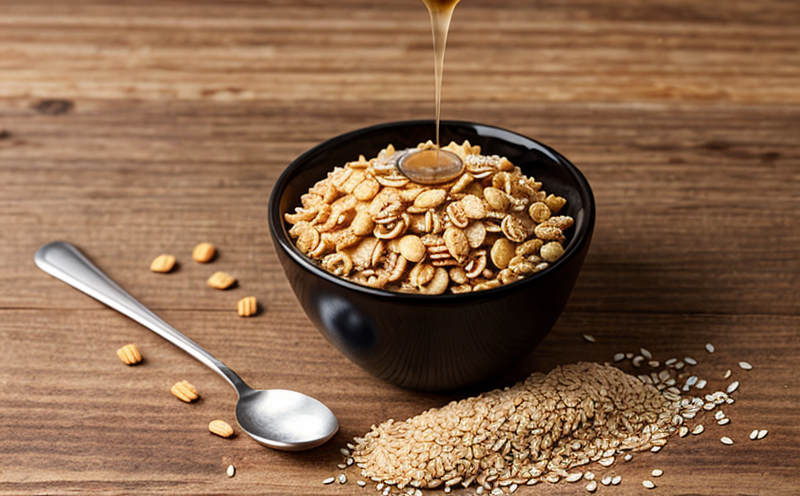Oven Aging Thermal Stability Test
The Oven Aging Thermal Stability Test is a crucial procedure in the food and feed testing sector. This test evaluates how well cereal grains withstand elevated temperatures during processing, storage, or transportation. Understanding the thermal stability of cereals is essential for ensuring product quality, shelf life, and safety.
Thermal stability refers to the ability of a material (in this case, cereal grains) to maintain its physical properties under heat stress without undergoing significant changes that could compromise its functionality or consumer safety. This test is particularly important in sectors where cereals are processed into various food products like breakfast cereals, bread, pasta, and pet food.
The process involves heating a sample of the cereal grain to specific temperature ranges (typically between 60°C and 120°C) for defined durations. The objective is to observe how the physical properties such as color, texture, and chemical composition change over time. This helps in determining whether the processed product will maintain its quality during storage or under typical processing conditions.
For instance, in the case of breakfast cereals, it’s essential to ensure that the grains do not degrade significantly at high temperatures, which could lead to a bitter taste or off-flavors. Similarly, for pet food manufacturers, understanding how the cereal components behave during heating can help prevent nutritional loss and improve shelf stability.
During the test, samples are subjected to controlled temperature conditions in an oven, simulating real-world scenarios where cereals might experience heat stress. The testing apparatus typically includes a programmable oven capable of maintaining precise temperature settings for extended periods. After heating, the samples undergo detailed analysis using various analytical techniques such as colorimetry, texture analysis, and moisture content measurement.
The results from these tests are critical inputs for quality managers and R&D engineers in formulating new products or optimizing existing ones. Compliance officers rely on this data to ensure that products meet international standards and regulations regarding food safety and quality. For procurement teams, understanding the thermal stability of cereals helps in selecting suppliers who can provide consistent quality.
| Standard Name | Year |
|---|---|
| ISO 17592-3:2014 | 2014 |
| ASTM E1863-12 | 2012 |
Why It Matters
The Oven Aging Thermal Stability Test is vital for several reasons, primarily related to ensuring product quality and safety. By understanding how cereals behave under heat stress, manufacturers can make informed decisions about processing parameters that minimize the risk of degradation during production.
In terms of food safety, this test helps in preventing the growth of pathogens or contaminants that could be exacerbated by high temperatures. For instance, certain molds and bacteria thrive under warm conditions, which is why assessing thermal stability is crucial for ensuring that cereals remain safe for consumption even after processing.
From a quality perspective, maintaining consistent product performance is paramount. Variations in color, texture, or moisture content can significantly impact the consumer experience. By standardizing these parameters through rigorous testing, manufacturers ensure that their products meet expected standards and deliver the same level of satisfaction to consumers time after time.
For companies involved in export markets, compliance with international standards is non-negotiable. Regulatory bodies often require evidence of thermal stability as part of certification processes. This test provides the necessary data to demonstrate adherence to these regulations, thereby facilitating smoother trade and reducing the risk of recalls or penalties.
Applied Standards
- ASTM E1863-12: Standard Test Method for Determination of Color Stability of Foods by Oven Aging
- ISO 17592-3:2014: Cereals and cereal products - Part 3: Determination of color stability, texture, and moisture content after oven aging
Industry Applications
- Manufacturing breakfast cereals to ensure consistent quality and shelf life.
- Developing bread formulations that can withstand high-temperature baking without compromising texture or nutritional value.
- Creating pet food products that maintain their palatability and safety during processing and storage.
- Formulating snack foods that retain their crispness and flavor under heat stress.
- Optimizing the production of pasta, where thermal stability affects cooking quality and texture.





